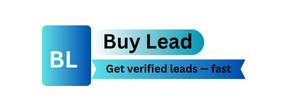Understanding Semantic SEO Fundamentals for Digital Growth
Semantic SEO represents a sophisticated approach to search engine optimization. It moves beyond simple keyword matching. Instead, it focuses on understanding user intent. Search engines now grasp the context and meaning of content. This shift demands a more holistic strategy. Websites must provide comprehensive answers to user queries. Semantic SEO ensures your content aligns with what users truly seek. It builds relevance and authority.
Effective semantic optimization considers entities and relationships. It links concepts together meaningfully. This helps search engines categorize and rank your pages better. It boosts visibility in search results. A strong semantic strategy improves user experience. It keeps visitors engaged longer on your site. This engagement signals quality to search engines. Thus, a robust semantic foundation is vital for any online presence.
Implementing semantic SEO requires attention to detail. It involves structuring content logically. It means using a variety of related terms. These terms support the main topic deeply. This method is far more effective than keyword stuffing. It creates a richer, more informative experience. This comprehensive approach establishes expertise. It positions your site as a trusted resource. Embracing semantic SEO is key for sustained success.
The Critical Role of External Backlinks in Authority Building
External backlinks are fundamental pillars of strong SEO. They are links from other websites to your site. Search engines view these as votes of confidence. Each backlink signals trust and authority. High-quality external links boost your domain rating. They elevate your position in search engine results pages (SERPs). Earning these links is crucial for digital growth.
Not all external backlinks are equal in value. Links from reputable, relevant websites carry more weight. These authoritative links pass significant “link equity.” They improve your site’s perceived trustworthiness. A diverse backlink profile is also beneficial. It shows organic growth and widespread recognition. Building a robust backlink strategy is an ongoing process. You can learn more about developing an effective External Backlink strategy for your website’s success.
Acquiring external backlinks requires strategic outreach. It involves creating shareable, high-value content. Other sites will naturally want to link to excellent resources. Guest blogging and broken link building are also effective tactics. Focus on quality over quantity for these links. A few strong, relevant backlinks are better than many low-quality ones. These links are essential for true authority building.
Enhancing Site Structure and User Experience with Internal Backlinks
Internal backlinks are links connecting pages within your own website. They serve multiple vital functions. First, they help search engines discover and index your content. They create a clear path for crawlers. This ensures all important pages are found. Second, internal links distribute “link equity” throughout your site. They pass authority from stronger pages to weaker ones. This strengthens your overall domain.
Proper internal linking enhances user experience significantly. Visitors can easily navigate through related content. This keeps them on your site longer. It reduces bounce rates. A well-planned internal link structure guides users intuitively. It helps them find what they need. This seamless journey improves overall site engagement. It contributes positively to SEO metrics and user satisfaction.
Strategic internal linking should be contextually relevant. Place links naturally within your content. Use descriptive anchor text that reflects the linked page’s topic. Avoid generic phrases like “click here.” Map out your site’s architecture for optimal flow. Create a hierarchical structure. This ensures that valuable content is easily accessible. Effective internal linking is an often-overlooked SEO superpower. It builds a strong, navigable website.
Strategic Keyword Integration for Semantic Understanding
Keywords remain central to SEO, even with semantic advancements. However, their role has evolved significantly. Today, it’s about understanding user intent behind the search. It’s not just matching exact phrases. Semantic keyword research uncovers related terms and concepts. It identifies long-tail variations and common questions. This approach helps create comprehensive content.
Integrating keywords strategically means using them naturally. They should appear in headings, subheadings, and body text. Avoid keyword stuffing at all costs. It harms readability and search rankings. Instead, focus on thematic relevance. Use synonyms and latent semantic indexing (LSI) keywords. These related terms enrich your content’s meaning. Thorough Keyword research guides your content strategy. It ensures you target what users are truly searching for.
A smart keyword strategy considers the full search journey. It maps keywords to different stages of the buying funnel. Informational keywords might target early awareness. Commercial keywords aim for conversion. Understanding this context is vital for content planning. It ensures your content meets specific user needs. This thoughtful integration drives targeted traffic. It ultimately boosts your site’s authority and relevance.
Weaving Together Backlinks and Keywords for SEO Success
Achieving top search rankings requires a unified approach. Semantic SEO, external backlinks, internal links, and keywords work synergistically. They form a powerful ecosystem. Each element amplifies the others. Strong external backlinks provide the foundational trust and authority. They signal to search engines that your site is valuable. This authority helps your content rank higher.
Effective internal linking strengthens your site’s structure. It ensures link equity flows efficiently. This helps search engines discover all your valuable content. It also enhances the user journey on your site. When combined with strategic keyword use, content becomes highly relevant. It addresses specific user intent comprehensively. This holistic approach satisfies both algorithms and human readers.
Ultimately, a successful SEO strategy is never static. It requires continuous monitoring and adaptation. Focus on creating high-quality, relevant content consistently. Build natural, authoritative backlinks over time. Refine your keyword strategy based on performance data. By thoughtfully integrating these components, you will achieve lasting organic growth. Your website will become a trusted resource in its niche. This integrated method drives true long-term SEO success.
